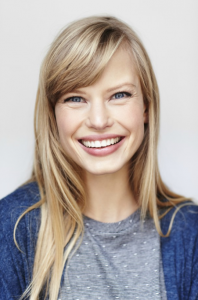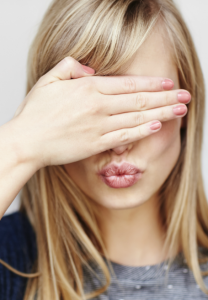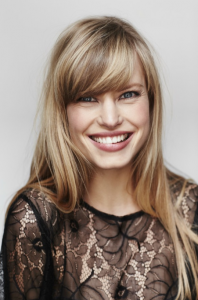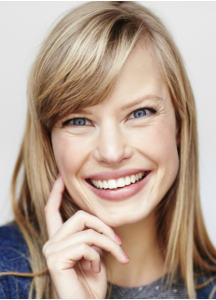This Is What The Ideal LinkedIn Photo Looks Like (+ 6 Tips To Perfect Yours!)
Published on July 26, 2016
There is some serious internet stalking going on these days.
I don’t mean the sinister kind; I mean the regular, everyday Googling kind.
Have you ever looked up someone’s LinkedIn profile before you met them? A client? A future employer? A prospective employee? A whopping 7 million Australians use LinkedIn, which is the second most frequently used social network by Australians (after Facebook). So it’s probably not surprising that your LinkedIn profile is probably the first result people will find when they Google you. Over 90% of employers use social media to recruit candidates, but even if you’re not actively looking for a job, you can’t afford to ignore your visual representation in the digital world.
Your LinkedIn profile is a great way to take control of your business identity and personal brand. More than ever, it’s crucial to have a strong LinkedIn profile, as it’s often your best chance to make a good first impression. Having a LinkedIn photo makes your profile 14 times more likely to be viewed, but what is that photo saying about you?
A study by Princeton University psychologists suggests it only takes a tenth of a second to form an impression based on a photo of a person. Even when participants had longer to study a photo, they didn’t significantly change their initial conclusions.
Clearly then we’re all at the mercy of people’s snap judgments for what our photos convey about our social and business skills. Yikes!
So how do you convince people that you’re competent, capable and likeable through a photo?!
There’s good news: researchers at Photofeeler, a profile photo testing tool, have done the hard yards for us. They analyzed over 60,000 ratings of perceived competence, likeability and influence for over 800 profile photos, and here’s what they found:
This is the perfect profile pic.
What makes it so great, and how can you make yours look just as good? Here are some tips from the study on how to put your best digital face forward:
1. Say cheese
A smile is a powerful tool – it makes you look more approachable, attractive and trustworthy. So you should definitely smile in your photo – just as you would if you met a business contact in real life. But what kind of smile? Interestingly, nothing will have more impact on your apparent likeability than showing your teeth when you smile (bonus: a toothy grin also increases scores for competence and influence). The study found that a closed mouth smile had no impact on competence and influence, and was only half as likely to make you look more likeable. But don’t overdo it! Laughing in your picture may increase your likeability, but at the expense of looking competent and influential. It might be good to ‘smize’ for your modelling portfolio, but not for LinkedIn

2. But remember to ‘squinch’ a little
Made famous by photographer Peter Hurley, the ‘squinch’ technique involves gently squinting as you smile. This has been shown to make people look more confident, as it mimics a natural smile. Moreover, a squinch was shown to increase people’s perceived competence and influence.

A slight smile without your teeth showing could make you seem less likeable

Squinch? Check. Toothy Smile? Check. Likeability? Through the roof!
3. Make eye contact
Eyes are the window to the soul, after all – and you don’t want to seem like a soulless freak, do you? Blocking the eyes brought down scores for likeability, competence and influence. So sunglasses are a definite no-no, but wearing glasses was shown to increase perceived competence and likeability. So if you wear glasses, go ahead and wear them for your LinkedIn photo! Don’t obstruct your eyes for your LinkedIn shots

4. Wear formal clothing
Perhaps it’s not all that surprising that dressing for success can actually make you appear – and be – more successful. Wearing formal clothing had the largest gains in perceived competence and influence. So even if you work in a less formal industry, it’s a good idea to pull your suit out of its dry cleaning plastic to take your LinkedIn photo. Remember, it’s a professional networking site – so don’t make your casual appearance make colleagues, clients, recruiters and hiring managers ‘swipe left’. Wearing informal clothing makes you look less professional and less competent

5. Show your face (but not your idiosyncrasies)
The study found that a bust (head and shoulders) or torso (head-to-waist) shot is preferable to a close-up of the face or a full-body shot. This isn’t the place to get quirky either, so no funny faces, two thumbs up or thoughtfully stroking your chin – these are likely to make you look cheesy and detract from your professional persona. It’s a good idea to keep your hands off your face in your LinkedIn photo

6. Look at the camera head on
It should go without saying, but LinkedIn really isn’t the place for selfies, with your head cocked sideways and your best duckface. So even if you’re accustomed to tilting your head when you have a photo taken, try to straighten your head, stick out your jaw to make it more defined (another Peter Hurley trick) and make eye contact with the camera. Cocking your head to one side makes you appear less competent

Having a stellar LinkedIn profile is just as important as an updated resume or cover letter, whether or not you’re in the job market. So don’t underestimate that tiny little square that is often your first impression in the digital world.



